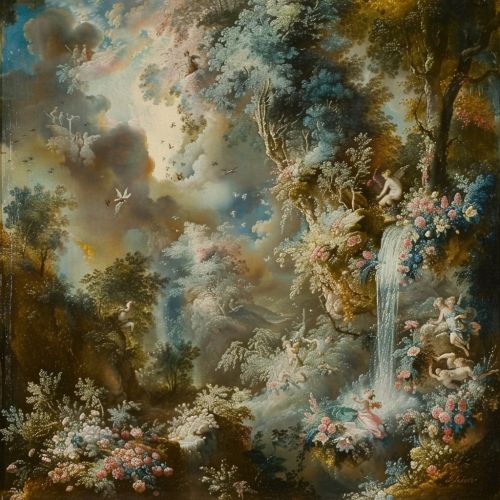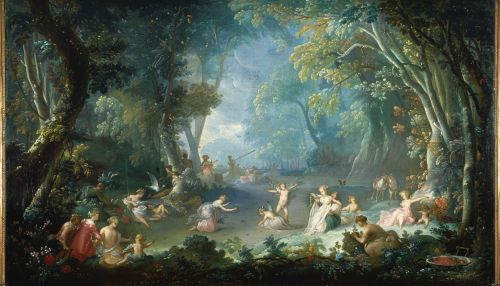François Boucher
Early Life
François Boucher was born on September 29, 1703, in Paris, France. He was the son of Nicolas Boucher, a humble lace designer who had a small but reputable workshop in the city. François showed an early interest in art, and his father was quick to nurture this talent, providing him with his first lessons in drawing and painting.
Education
At the age of 17, Boucher was apprenticed to François Lemoyne, a prominent painter in the court of Louis XV. Lemoyne was known for his Rococo style, characterized by its lightness, elegance, and an exuberant use of curving natural forms in ornamentation. Under Lemoyne's guidance, Boucher honed his skills and developed his own unique style that would later define his career.
Career
Boucher's career began to take off after he won the Prix de Rome in 1723, a prestigious art scholarship that allowed him to study in Rome for three years. During his time in Rome, Boucher was exposed to the works of Italian masters such as Raphael and Michelangelo, which greatly influenced his artistic style.
Upon his return to France, Boucher quickly gained recognition for his artistic talent. He was commissioned to create a series of tapestry designs for the Beauvais Tapestry factory, which were highly praised for their intricate detail and vibrant colors.
In 1734, Boucher was admitted to the Académie Royale de Peinture et de Sculpture, one of the most prestigious art institutions in France. His admission to the Académie marked a significant milestone in his career, as it allowed him to take on more high-profile commissions and further establish his reputation as a leading figure in the French art scene.
In 1735, Boucher was appointed as the court painter to Madame de Pompadour, the official chief mistress of Louis XV. This position provided him with a steady stream of commissions, and his works from this period are some of his most famous.
Boucher's style, characterized by its lightness, elegance, and an exuberant use of curving natural forms in ornamentation, was a perfect match for the tastes of the court. His paintings often depicted pastoral scenes, classical themes, and portraits of the nobility, all executed with a level of detail and color that was unmatched by his contemporaries.
Boucher's influence on the Rococo style was profound. His works were widely copied and imitated, and his style became synonymous with the Rococo movement in France.
Later Life and Death
In his later years, Boucher continued to paint and take on commissions, although his health began to decline. He died on May 30, 1770, in Paris, leaving behind a vast body of work that continues to be celebrated for its beauty and technical mastery.
Legacy
François Boucher's legacy in the art world is significant. His contributions to the Rococo style and his influence on French art during the 18th century are undeniable. His works are held in high regard and are displayed in major museums around the world, including the Louvre and the Metropolitan Museum of Art.


